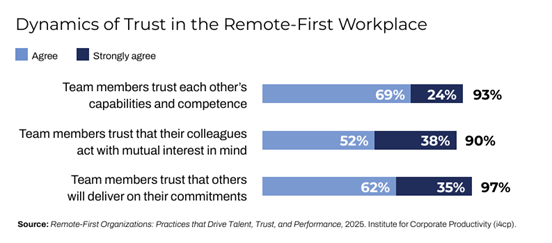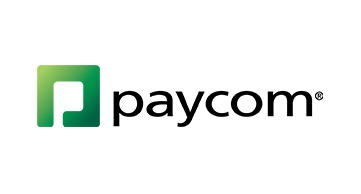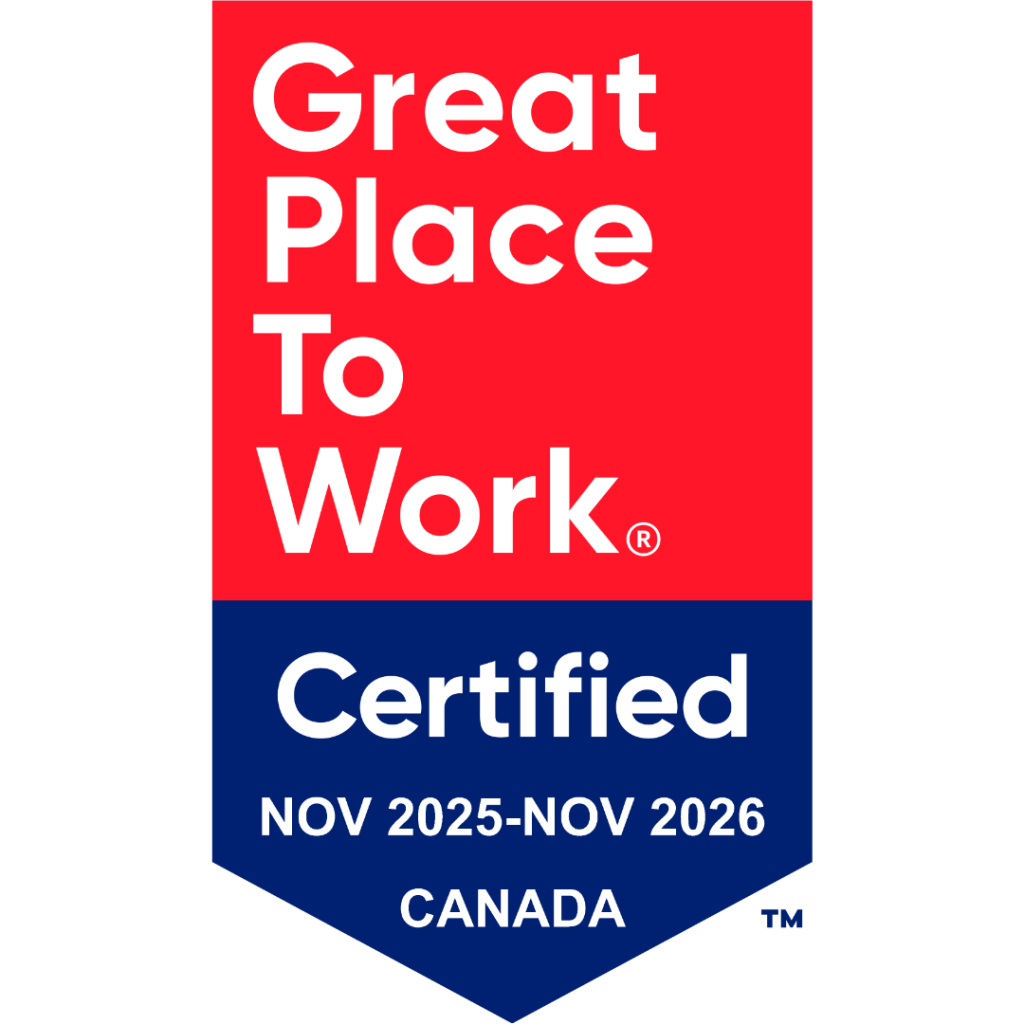Remote-first organizations are here to stay. At this point, it’s clear that having a remote or flexible workforce does not come at the sacrifice of productivity. But what’s the secret? Recent research from the Institute for Corporate Productivity (i4cp) suggests that success is rooted in one key ingredient: trust.
In i4cp’s recent report, Remote-First Work: Practices that Drive Talent, Trust and Performance, researchers examined the evolution of remote-first work and productivity. The findings were stark. Productivity remains high at remote-first organizations, with little surveillance of employees.
One might imagine employees working feverishly from their home offices, kitchens or sofas fueled by keystroke trackers, the little green light in their company chat platforms or the thought that they are somehow being watched, with their feet being held to the proverbial virtual fire to produce greater outcomes. But the reality is actually quite different.
Companies are using little to no surveillance technology to monitor remote worker productivity. Instead, they are depending heavily on trust.
While some fully in-office companies rely heavily on attendance data to help gauge productivity, a majority (62%) of survey respondents in i4cp’s latest study said their remote-first organization has not used technology to monitor the activity of remote workers.
Even still, productivity continues to soar. Sixty-two percent of HR leaders surveyed by i4cp responded that productivity at their companies is high, and about 21% said that productivity is very high among remote-first organizations.
This is a finding that national data reflects as well. A 2025 study published by the U.S. Bureau of Labor Statistics found that productivity increased across industries as remote work increased. And it’s showing up in companies’ bottom line as well. Joint research from advisory firm Work Forward and Boston Consulting Group (BCG) revealed that fully flexible companies grew revenues 1.7x faster than companies requiring employees to return to the office from 2019-24.
Trust and high performance
Leaders suggest a major factor in these companies’ success is simple: It’s about trust.
“Employees who feel trusted are more likely to go the extra mile and put in discretionary effort. If you’re telling me to be in the office five days a week when my team is spread out across time zones, what you’re saying is you don’t trust me,” Brian Elliott, CEO of Work Forward, told i4cp.
Surveillance of employee activity may inadvertently backfire for leaders, signaling mistrust and eroding engagement. Just as some employees are irked by having to swipe a badge at an office to prove they worked on a certain day, leaders would be hard-pressed to find employees who rejoice in being monitored at home. High-performance organizations notably use outcome-based measurements of employees, which is both sufficient and sustainable.
Perhaps it comes as no surprise that when trust is high, employees are more willing to collaborate across boundaries, share knowledge openly and take risks that fuel innovation. Without the ability to rely on casual in-office interactions at the watercooler or the cafeteria, distributed teams rely heavily on confidence in their colleagues’ competence and intent.
About 90% of HR leaders surveyed agreed or strongly agreed that their colleagues act in one another’s best interests. Survey respondents also noted high trust in their team members’ ability to deliver on their commitments.
This is a long-established merit of high-performance organizations. Past research from i4cp found that leaders from high-performance organizations are far more likely to say that they trust their remote workforces than their counterparts from lower-performing organizations.

What does success look like at remote-first organizations?
Omada Health offers a rich example of trust in action at a remote-first organization. The virtual healthcare provider admittedly does not rely on technology or time-based measures of productivity, said Chief People Officer Nancy Vitale in an interview with i4cp.
Instead, the company evaluates performance based on outcomes like contribution against goals, delivery on expectations and alignment with organizational objectives. “It’s looking at things like, are we delivering or exceeding expectations at the company level, the function level, the team level, etc.? That’s the real measure of productivity,” Vitale said.
Vitale emphasized that the autonomy the company offers employees does not erode accountability. Instead, it strengthens it, as leaders evaluate employees on impact, not hours logged.
Omada Health embeds that sentiment into the fabric of its culture. The company’s values of flexibility and autonomy are central to its employee value proposition. Since catalyzing remote-first work as a core operating approach following the pandemic, it has become a primary lever for attracting talent.
Going all in on trust is paying off. Vitale pointed to the company’s recent earnings as evidence that a trust-based model drives results at scale. The company exceeded expectations in both revenue and AEBITDA in its first-ever public earnings call in 2025.
One thing is for sure for high-performance remote-first organizations: In an argument for productivity, trust will be the last thing they pull back on.






















